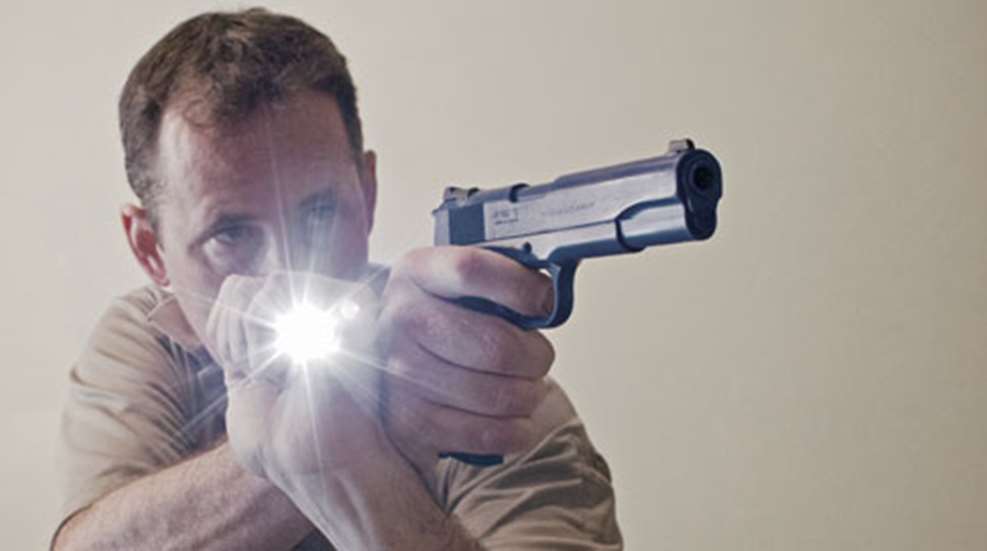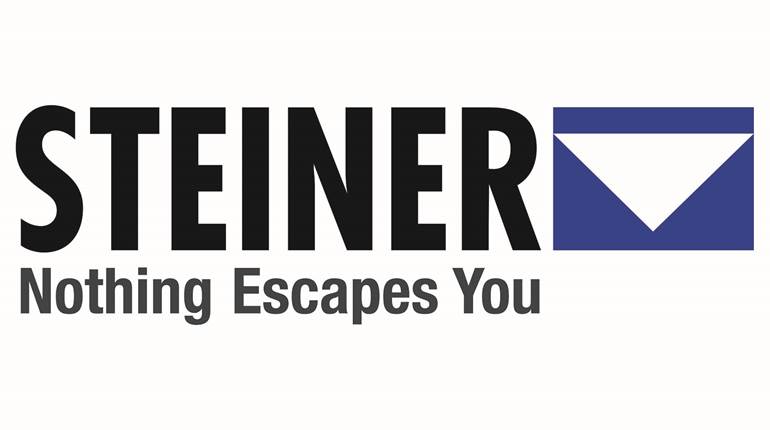
Like most predators, bad guys like to work in low light. This gives them the element of surprise and protects their anonymity. Control the light and you can better control any situation. If you’re serious about protecting yourself with a handgun, you should be committed to training to do it in low-light conditions.
Two accessories a gun store clerk may try to sell you are night sights and a laser. Neither are a bad idea, but you must be able see your sights and your target. You need to identify the target and confirm if it is a threat, and that requires light. In addition, light can be a discouraging influence to potential assailants and may forestall the need to use deadly force; but if deadly force is deemed necessary, light aids in applying it.
Lights, Sights & Lasers
You need to know what type of light will help you control a situation and which sights will work in a wide variety of lighting conditions. Once you identify the threat, you must be able to see your sights to engage it.
Most tacticians agree that a tactical light should have an output of at least 60 lumens. That is bright enough to momentarily impair someone’s vision from across the room. I prefer 100 lumens for a more stunning effect and longer reach. A dual-output light with low and high illumination settings provides a bright beam for target identification, disorientation and shooting, while the low-output beam can be used for navigation.
Ideally, a tactical light will also have lithium batteries and an LED bulb. Lithium batteries hold up to the high-lumen draw and deteriorate less slowly. The LED bulbs are generally much more shock-resistant than incandescent bulbs (especially those that are hot), and that could be important if you drop your light or end up using it for striking.
Finally, a light with the activation switch located on the end or tail-piece provides easier activation under stress and works well with all popular flashlight shooting techniques. My wife and I both carry SureFire E1B Backup lights everywhere we go. With 5- and 110-lumen output settings, the E1B meets these criteria, is just 4-inches long and weighs only 2.8 ounces.
Most modern handguns have an accessory rail. Many companies offer high-output lights that can be attached to these rails, and some even have an integrated laser. Most are easy to activate while maintaining a normal two-hand grip. Having the light attached directly to your handgun frees your other hand for opening doors, calling 911 or reloading. The downside to gun-mounted lights is that holsters that will accommodate handguns fitted with lights are hard to find, bulky and not conducive to concealed carry. It also prohibits the independent use of the light; anything you look at with a mounted light also ends up having a gun pointed at it.
Sights need to be rugged but, most importantly, they must be easy to see. When the light is minimal, you don’t want to look for your sights, you want to see them as soon as you raise your handgun. The original Colt M1911 had sights that could best be described as bumps. For 100 years handgun sights have been getting bigger and easier to see. In my opinion, the ultimate evolution of easy-to-see handgun sights might be the 24/7 Big Dot sights from XS or a handgun-mounted laser. The Big Dot sights are essentially a copy of the express sights found on dangerous game rifles. They feature a shallow V rear sight and a large, white, front dot. You don’t have to look for them.
Lasers are exceptionally easy to see in low light, and those with instinctive activation, such as the Crimson Trace Lasergrips, are fast, durable and efficient aiming tools. I’ve yet to see a handheld flashlight bright enough to overwhelm a laser beam on target. However, if you’ve relied on pistol sights all your life, lasers take additional training to become second-nature. All my carry guns have XS Big Dots, Crimson Trace Lasergrips or both.
With the right gear you’re ready to learn how to employ a flashlight in a tactical manner when shooting a handgun. There are four techniques, and the situation should dictate which you use; however, you should be well versed in each.
Practical Application
Gunsite instructor Ed Head believes, “You need to learn all these flashlight techniques, as different ones may be appropriate in different circumstances. Try them out and see which technique works best given your hand size, type of pistol and flashlight, and you will probably decide on a favorite or default position. Bear in mind that the neck index technique is good for searching but will slow you down in shooting, especially for multiple shots, as you are shooting with one hand and the pistol will not be as stable.”
While the Harries and SureFire techniques unquestionably offer the most stable shooting platforms, they have a major drawback: If you are searching your home, backyard or anywhere else using either technique, whatever you point your flashlight at gets repeatedly covered by your muzzle, violating the important gun-safety rule to never let the muzzle cover anything you do not wish to destroy. This same issue applies to gun-mounted lights. They are better-suited for tactical teams and the military working against enemy occupied areas than for investigating the unknown in your own living room. For civilian use, pointing a loaded handgun at everything you look at is not safe, judicious use of a firearm.
A safer approach when searching would be to keep the handgun in the holster, at your side or tucked in tight against your body with the muzzle pointed in a safe direction. If you encounter a threat, you can immediately transition the light from the FBI or neck indexing techniques to either the Harries or SureFire methods and draw and/or aim your handgun. If you have a gun-mounted light you could turn it on at that time. You could also use a handheld flashlight in conjunction with a gun-mounted light. If you have a lanyard on your handheld light you can release it and engage the threat with the handgun and the mounted light. A lanyard on your hand-held light will also free that hand for clearing a malfunction or other chores.
Don’t forget that a flashlight by itself is a powerful self-defense tool that can—and should—be used independently of the handgun. You can use it when you are walking across a parking lot or even when on the sidewalk to check alleys for suspicious characters. Whether in the dark, in low light and or even during the day, a flashlight can be your first line of defense. It can illuminate a situation, unmask what’s lurking in the shadows and momentarily blind adversaries allowing you to create distance, draw your handgun and, if necessary, engage.




































